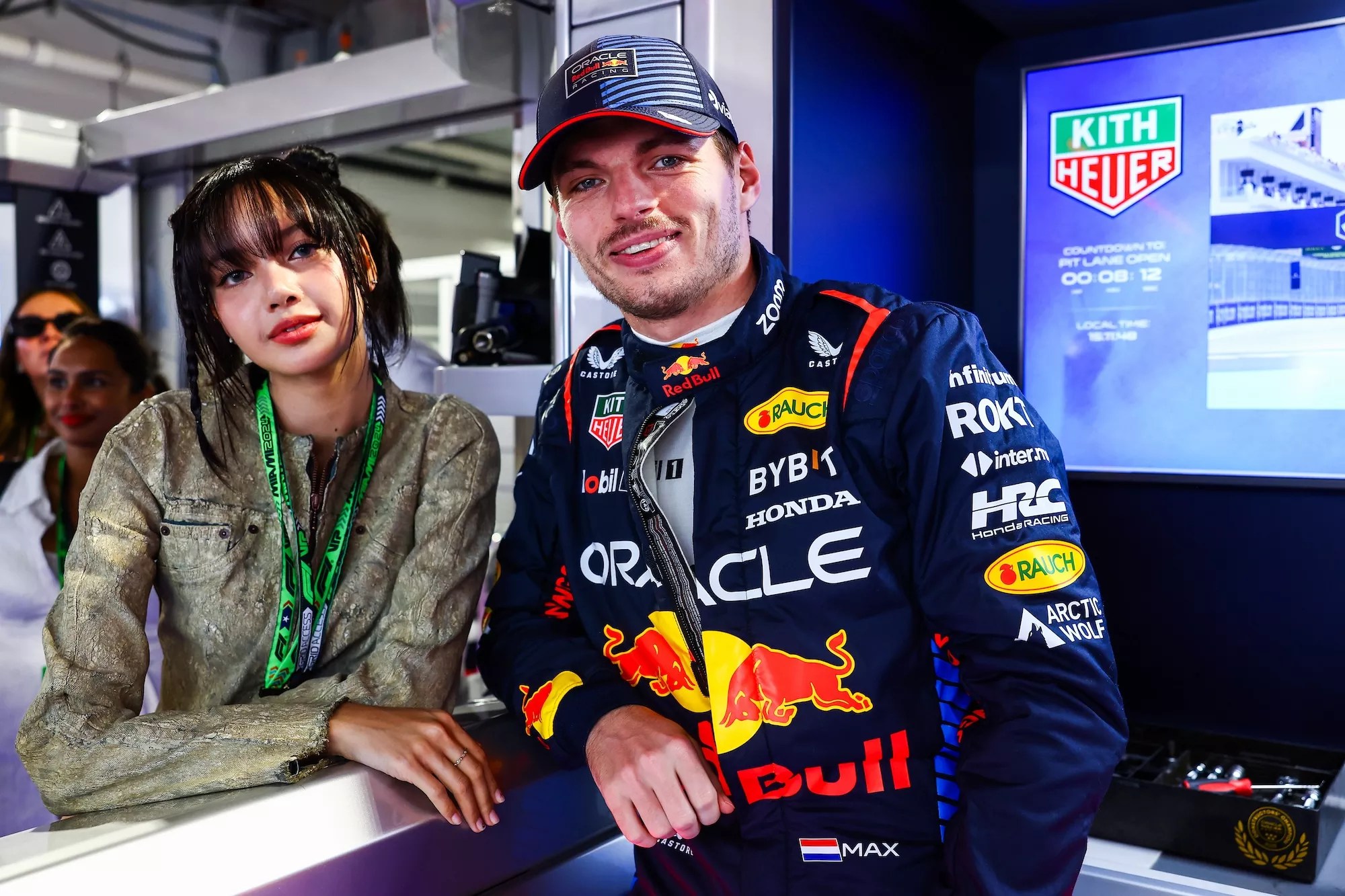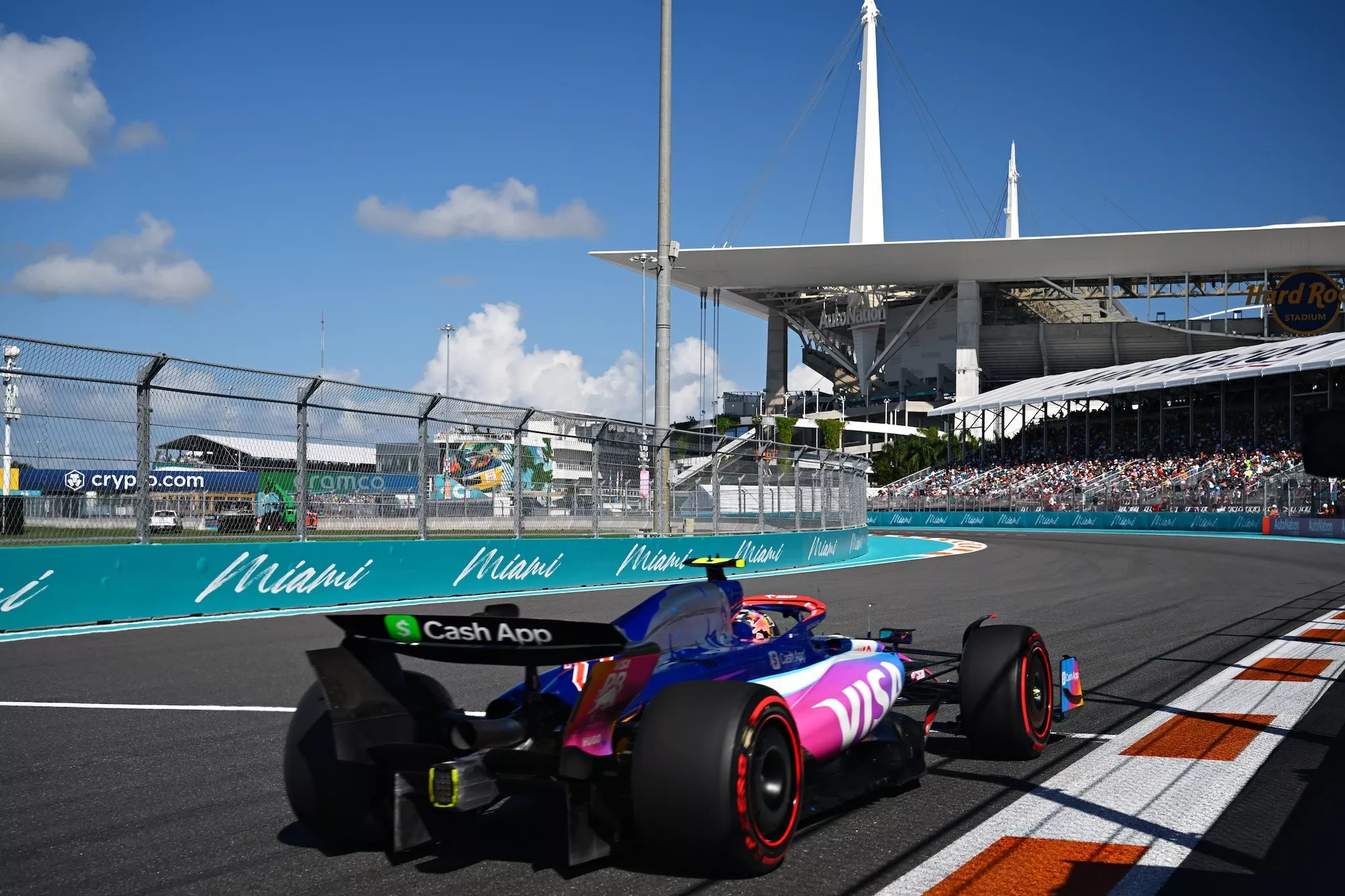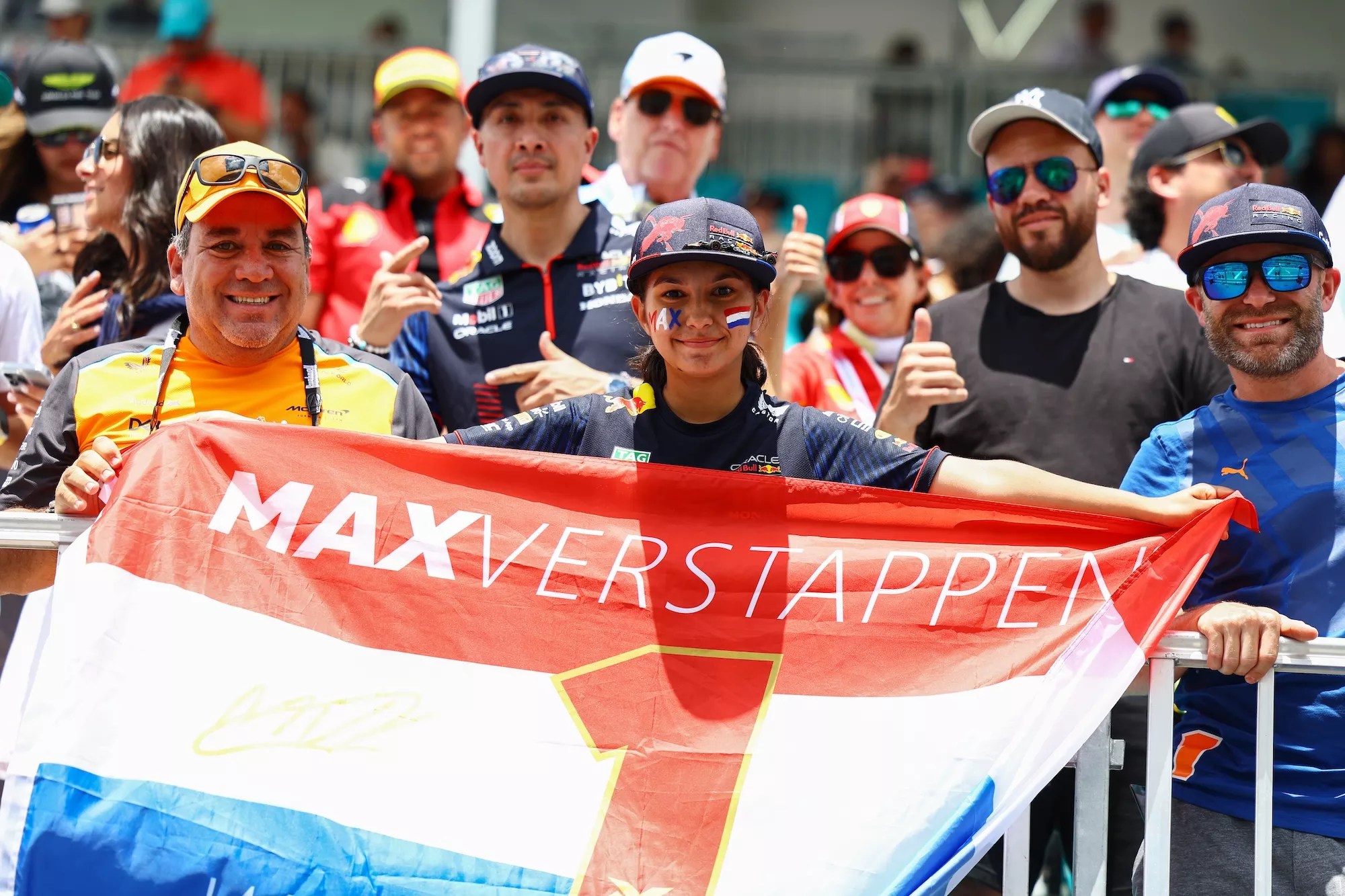
Photo by Mark Thompson/Getty Images

Audio By Carbonatix
It’s Friday afternoon at the Miami Grand Prix, and the Formula 1 drivers are about to head onto the track for their only practice session of the weekend. I’m watching the action from the top floor at the Champions Club, a three-level VIP zone overlooking the gentle curve of Turn 5, one of the best vantage points at the Miami International Autodrome. There’s also complimentary gourmet food, an open bar, and special appearances from notable figures in F1. It’s part of a package sold by F1 Experiences, an officially licensed agency offering all-inclusive packages for various Formula 1 races.
The price for all this? One couple visiting from Chicago says they paid $5,000 for the package.
“We love it, we’re big fans of F1,” says Lindsay, an artist. She and her boyfriend Brent, who works in finance, visited the race last year after being gifted tickets that included access to the Paddock Club. That package would have cost them $10,000, so they went with the comparatively cheaper Champions Club.
Luxury experiences like these are typical at the Miami Grand Prix, which is still one of the most expensive races on the F1 calendar, only below Monaco and Las Vegas. Tickets for the Hard Rock Beach Club area, which features a swimming pool and performances from Ed Sheeran, Don Omar, and DJs like Steve Aoki and John Summit, start at $1,750, with cabanas running an eye-watering $65,000. That apparently doesn’t include food and beverage. A viral post on X, formerly known as Twitter, by NASCAR driver Ryan Ellis showed a menu listing two empanadas for $170, Maine lobster rolls for $280, and a one-ounce caviar add-on for $400.
Merch is also pretty expensive, especially officially branded team goods. Ferrari, for instance, was selling a limited-edition blue hat coordinated with their Miami Grand Prix weekend livery. The price? $125. A matching camp-collar shirt cost $225.
The cap sold out completely.

Japanese driver Yuki Tsunoda drives on track during Saturday’s qualifier ahead of the Miami Grand Prix.
Photo by Clive Mason/Getty Images
There’s clearly a demand for luxury experiences at the Grand Prix, which retains the star-studded glamour of its first couple of years – and there were plenty of celebrities at the race, including Tom Brady, Jimmy Butler, Keke Palmer, Camila Cabello, Lisa of Blackpink, and former President Donald Trump.
But this year, you didn’t have to spend a lot of money to have a good time. For one, ticket prices have come down from previous years. It’s possible to pay as little as $29 for access to the campus during Friday practice sessions – they’re not competitive, but if all you want to do is check out the campus and watch the cars go around the track, it’s an option. The cost of food is also commensurate with regular stadium prices.
And on that note, there’s plenty to do on campus for basic ticket holders, from simulators and selfie opportunities to luxury car displays and other activities in the various fan zones. Attendees can get a decent view of the track from the top level of Hard Rock Stadium. Although seating at this level doesn’t give a direct view of the racing, you can go inside and gaze down at the paddock on the field, where you might even catch a glimpse of one of the drivers on the football field. I saw Mick Schumacher, formerly of Haas and now a reserve driver for Mercedes, greeted by cheering fans after he entered the hospitality area.

Fans show their support for Max Verstappen at the Miami Grand Prix.
Photo by Mark Thompson/Getty Images
I also ran into Guenther Steiner, the former team principal of Haas and an “ambassador” for this year’s race. Thanks to his caustic personality and underdog status as leader of the beleaguered, back-running, American-owned team, Steiner gained a following as something of an unlikely protagonist of the Drive to Survive Netflix series. More than anything, F1’s recent success in the U.S. must be attributed to the dramatic behind-the-scenes documentary, and it does feel as though many are attending to catch a glimpse at their favorite characters, Steiner included. Fans could be seen gasping in joy at the sight of the middle-aged Tyrolean making an appearance at the F1 Explained podcast stage, and after he wrapped up, a crowd formed seeking autographs and selfies. He seems much happier than he was at Haas, that’s for sure.
Thanks to these experiences and others, the Miami Grand Prix seems to be evolving into a more inclusive event that prioritizes all kinds of fans, not just the ones who can afford luxury suites. It’s a smart move by the organizers – F1 owners Liberty Media have been determined to give the sport staying power in the U.S., and drivers such as Lewis Hamilton have commented on its increasing relevance. “I think all of us are super grateful for the U.S. finally embracing the sport and having the love and passion for it that we all had growing up,” he said in a press conference last week.
Chasing the American market means opening the race to more than just high rollers, and to their credit, this year, the organizers seem to be doing just that. Still, the aspirational nature of the sport is hard to shake.
I met another fan, Laz, on the top level of the stadium. Hailing from Hialeah Gardens, the twenty-something told me he’s been following the sport since the early 2010s. He’s a fan of Lewis Hamilton, a driver whose working-class origins make his success in the elite sport all the more extraordinary. Laz paid $450 for a three-day campus pass, but he says his friends have attended European races like the Belgian Grand Prix in Spa for around $1,000, airfare included.
In the future, Laz hopes to get a grandstand seat at the Miami Grand Prix. (This year, tickets started at $600.)
The race, by the way, sold out completely.